Neural control of the female urethral and anal rhabdosphincters and pelvic floor muscles
- PMID: 20484700
- PMCID: PMC2928615
- DOI: 10.1152/ajpregu.00111.2010
Neural control of the female urethral and anal rhabdosphincters and pelvic floor muscles
Abstract
The urethral rhabdosphincter and pelvic floor muscles are important in maintenance of urinary continence and in preventing descent of pelvic organs [i.e., pelvic organ prolapse (POP)]. Despite its clinical importance and complexity, a comprehensive review of neural control of the rhabdosphincter and pelvic floor muscles is lacking. The present review places historical and recent basic science findings on neural control into the context of functional anatomy of the pelvic muscles and their coordination with visceral function and correlates basic science findings with clinical findings when possible. This review briefly describes the striated muscles of the pelvis and then provides details on the peripheral innervation and, in particular, the contributions of the pudendal and levator ani nerves to the function of the various pelvic muscles. The locations and unique phenotypic characteristics of rhabdosphincter motor neurons located in Onuf's nucleus, and levator ani motor neurons located diffusely in the sacral ventral horn, are provided along with the locations and phenotypes of primary afferent neurons that convey sensory information from these muscles. Spinal and supraspinal pathways mediating excitatory and inhibitory inputs to the motor neurons are described; the relative contributions of the nerves to urethral function and their involvement in POP and incontinence are discussed. Finally, a detailed summary of the neurochemical anatomy of Onuf's nucleus and the pharmacological control of the rhabdosphincter are provided.
Figures

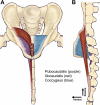
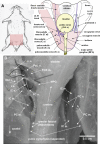





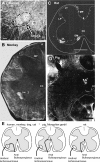
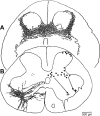


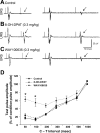

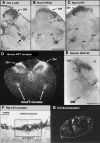

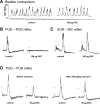
Similar articles
-
Immunohistochemical evidence for the interaction between levator ani and pudendal motor neurons in the coordination of pelvic floor and visceral activity in the squirrel monkey.Am J Obstet Gynecol. 2005 May;192(5):1506-15. doi: 10.1016/j.ajog.2004.10.607. Am J Obstet Gynecol. 2005. PMID: 15902150
-
Anatomy and neurocontrol of the pelvic floor.Digestion. 2004;69(2):87-92. doi: 10.1159/000077874. Epub 2004 Apr 14. Digestion. 2004. PMID: 15087575 Review.
-
Electromyography of pelvic floor muscles.J Electromyogr Kinesiol. 2006 Dec;16(6):568-77. doi: 10.1016/j.jelekin.2006.08.007. Epub 2006 Oct 18. J Electromyogr Kinesiol. 2006. PMID: 17055294 Review.
-
Pelvic Floor Dysfunction.2023 Jun 26. In: StatPearls [Internet]. Treasure Island (FL): StatPearls Publishing; 2025 Jan–. 2023 Jun 26. In: StatPearls [Internet]. Treasure Island (FL): StatPearls Publishing; 2025 Jan–. PMID: 32644672 Free Books & Documents.
-
The role of membranous urethral afferent autonomic innervation in the continence mechanism after nerve sparing radical prostatectomy: a clinical and prospective study.J Urol. 2008 Dec;180(6):2527-31. doi: 10.1016/j.juro.2008.08.020. Epub 2008 Oct 19. J Urol. 2008. PMID: 18930493
Cited by
-
Stability of the acetic acid-induced bladder irritation model in alpha chloralose-anesthetized female cats.PLoS One. 2013 Sep 9;8(9):e73771. doi: 10.1371/journal.pone.0073771. eCollection 2013. PLoS One. 2013. PMID: 24040064 Free PMC article.
-
Electromyography of pelvic floor muscles with true differential versus faux differential electrode configuration.Int Urogynecol J. 2020 Oct;31(10):2051-2059. doi: 10.1007/s00192-020-04225-4. Epub 2020 Feb 17. Int Urogynecol J. 2020. PMID: 32067059
-
Can we define and characterize the aging lower urinary tract?-ICI-RS 2015.Neurourol Urodyn. 2017 Apr;36(4):854-858. doi: 10.1002/nau.23035. Neurourol Urodyn. 2017. PMID: 28444710 Free PMC article. Review.
-
Effect of Single-Dose Imipramine on Anal Sphincter Tone in Healthy Women: A Randomized, Placebo-Controlled Study Using Anal Acoustic Reflectometry.Int Urogynecol J. 2024 Sep;35(9):1873-1879. doi: 10.1007/s00192-024-05890-5. Epub 2024 Aug 21. Int Urogynecol J. 2024. PMID: 39167201 Free PMC article. Clinical Trial.
-
Multimodal imaging assessment and histologic correlation of the female rat pelvic floor muscles' anatomy.J Anat. 2019 Apr;234(4):543-550. doi: 10.1111/joa.12943. Epub 2019 Feb 10. J Anat. 2019. PMID: 30740685 Free PMC article.
References
-
- Allen RE, Hosker GL, Smith AR, Warrell DW. Pelvic floor damage and childbirth: a neurophysiological study. Br J Obstet Gynaecol 97: 770–779, 1990 - PubMed
-
- Arvidsson U, Risling M, Frisen J, Piehl F, Fried K, Hokfelt T, Cullheim S. trkC-Like immunoreactivity in the primate descending serotoninergic system. Eur J Neurosci 6: 230–236, 1994 - PubMed
-
- Ashton-Miller JA, DeLancey JO. Functional anatomy of the female pelvic floor. Ann NY Acad Sci 1101: 266–296, 2007 - PubMed
-
- Barber MD, Bremer RE, Thor KB, Dolber PC, Kuehl TJ, Coates KW. Innervation of the female levator ani muscles. Am J Obstet Gynecol 187: 64–71, 2002 - PubMed
-
- Beattie MS, Li Q, Leedy MG, Bresnahan JC. Motoneurons innervating the external anal and urethral sphincters of the female cat have different patterns of dendritic arborization. Neurosci Lett 111: 69–74, 1990 - PubMed
Publication types
MeSH terms
Grants and funding
LinkOut - more resources
Full Text Sources
Other Literature Sources
Medical

